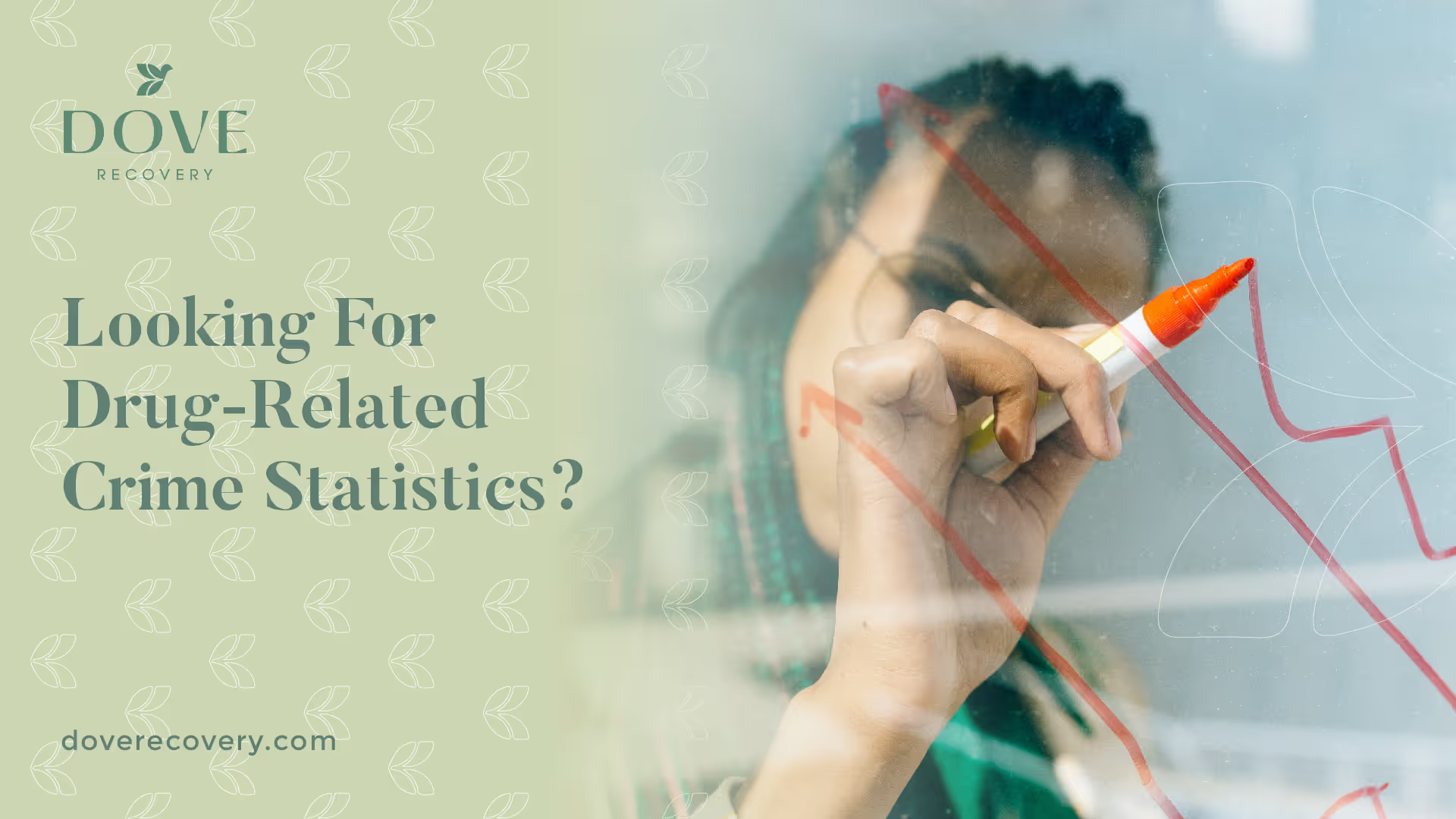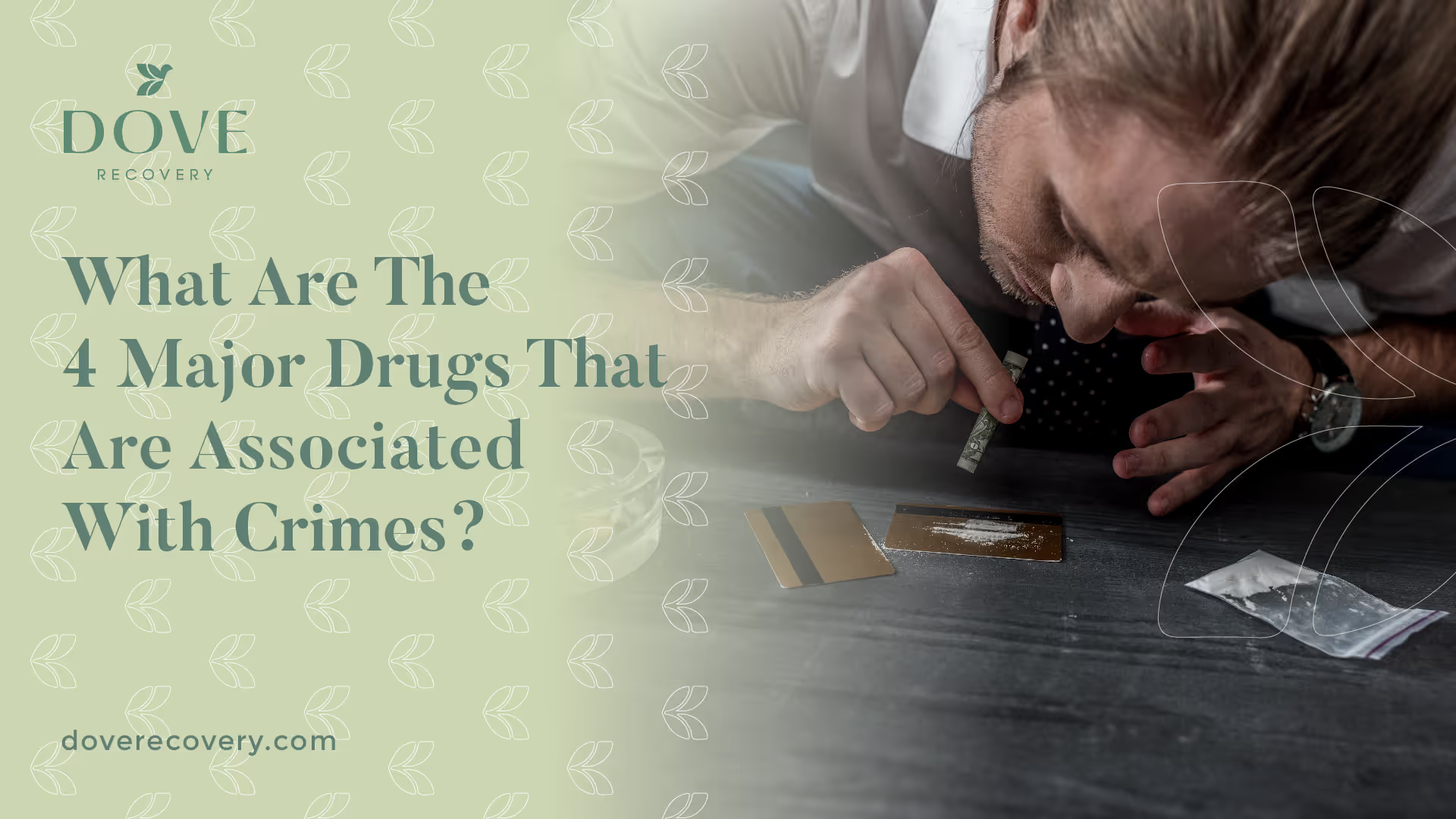Drug-Related Crime Statistics: Definition & Prevalence

Drug-Related Crime Statistics
- There are 1.6 million Americans who are arrested every year for drug related crime.
- 80% of prison inmates abuse drugs or alcohol.
- 26% of all arrests in America are related to drug offenses.
- 244,000 Americans are sent to prison annually for drug-related crimes.
- 35% of workplace victims of violence believed the offender was drinking or using drugs.
- There are 73,210 prisoners currently sentenced to a federal penitentiary for drug crimes.

Drug-related crime is a widespread issue that has plagued societies across the world for decades. It is a complex problem with many contributing factors, including poverty, social inequality, and a lack of drug addiction treatment options. In this article, we will explore the latest statistics on drug-related crime and the impact it has on communities.
According to the Drug Enforcement Administration (DEA), drug-related crime refers to any illegal activity that is connected to the use, possession, or distribution of drugs. This can include drug trafficking, drug possession, drug-related homicides, and other drug-related offenses. In recent years, drug-related crime has been on the rise in many countries.
Interesting Drug-Related Crime Statistics:
- In 2019, the United States saw a 5.6% increase in drug overdose deaths, with opioids being the main contributor to this rise.
- The National Institute on Drug Abuse (NIDA) reports that drug use and addiction cost American society more than $740 billion annually in lost workplace productivity, healthcare expenses, and crime-related costs.
- In England and Wales, drug offenses accounted for 16% of all crimes recorded by the police in 2019.
- According to a report by the European Monitoring Centre for Drugs and Drug Addiction (EMCDDA), drug-related deaths in Europe have been increasing over the past decade, with opioids being responsible for most of these deaths.
- In Australia, drug offenses accounted for 17% of all offenses recorded by police in 2018-19.
These statistics highlight the severity of drug-related crime and its impact on societies worldwide. It is clear that addressing this issue requires a multifaceted approach that includes prevention, treatment, and law enforcement efforts.
Total Drug Arrest Statistics
Total Drug Arrest Statistics is another important aspect to consider when discussing drug-related crime. These statistics provide insight into the number of individuals who are arrested for drug-related offenses, which can include drug possession, trafficking, and manufacturing.
According to the Uniform Crime Reporting (UCR) Program's latest report, there were approximately 1.6 million arrests in the United States for drug-related offenses in 2019. This represents a slight decrease of 2.8% from the previous year.
However, it is important to note that drug-related arrests still make up a significant portion of all arrests made in the United States. In fact, they accounted for approximately 35% of all arrests in 2019.
In addition to the United States, other countries also report high rates of drug-related arrests. For example, in Canada, drug offenses accounted for 30% of all police-reported crimes in 2019. In Australia, approximately 80% of all drug offenses result in an arrest.
These statistics demonstrate that despite efforts to combat drug-related crime through prevention and treatment programs, law enforcement efforts remain a critical component in addressing this issue.
The Global Issue of Drug-Related Crime Statistics
Drug-related crime is a major concern for law enforcement officials around the world. In the United States, drug offenses accounted for 13.4% of all arrests in 2019, making it the second most common reason for arrest, after traffic violations. Of these drug arrests, 84.1% were for drug possession, while the remaining 15.9% were for drug sales or manufacturing.
Drug-related crime is not limited to the United States. In many other parts of the world, drug trafficking and drug-related violence are major issues. For example:
- In Mexico, drug-related homicides have been on the rise in recent years. According to the National Institute of Statistics and Geography (INEGI), there were 34,582 homicides in Mexico in 2019, and around 70% of these were related to drug trafficking.
- In Colombia, drug trafficking has been a significant problem for decades. The country is one of the world's largest producers of cocaine, and drug cartels have been responsible for numerous acts of violence and corruption.
- In Afghanistan, opium production has been a major source of income for many farmers. The Taliban has also profited from the drug trade by taxing opium farmers and traffickers.
- In Southeast Asia, drug trafficking has been a persistent problem for many countries, including Thailand, Vietnam, and Indonesia. These countries are major transit points for drugs being smuggled from other parts of the world to markets in Asia or elsewhere.
Overall, drug-related crime remains a complex and challenging issue that affects many countries across the globe.
The impact of drug-related crime on communities is significant. Drug-related violence can lead to loss of life and injury, and drug addiction can tear families apart. The cost of drug-related crime is also high, both in terms of the financial burden on law enforcement and the impact on the economy. Drug addiction treatment programs can also be expensive, and many communities lack the resources to provide adequate treatment options.
Cost of Drug-Related Crime
The cost of drug-related crime is a significant financial burden on society. The National Institute on Drug Abuse (NIDA) reports that drug use and addiction cost American society more than $740 billion annually in lost workplace productivity, healthcare expenses, and crime-related costs. In addition to the United States, other countries also face high costs associated with drug-related crime. For example:
- In Canada, the Canadian Centre on Substance Use and Addiction estimates that the societal cost of substance use was CAD 46 billion in 2017.
- In Australia, the Australian Criminal Intelligence Commission reported that the total economic and social costs of illicit drugs in Australia were AUD 8.2 billion in 2016-17.
- In Europe, a report by the European Monitoring Centre for Drugs and Drug Addiction (EMCDDA) estimates that the total social cost of drug use in Europe was €155.8 billion in 2019.
These statistics show that drug-related crime has a significant impact not only on individuals but also on societies as a whole. Addressing this issue requires a comprehensive approach that includes prevention, treatment, and law enforcement efforts.
What Are The 4 Major Drugs That Are Associated With Crimes?

Recent studies have shown that certain drugs are more commonly associated with criminal activity than others. According to a report by the National Institute on Drug Abuse (NIDA), the four major drugs that are most often linked to crime are cocaine, methamphetamine, heroin, and prescription opioids. The report found that:
- Cocaine was involved in 17% of all drug-related emergency department visits in 2011, and it was responsible for 6% of all drug-related deaths.
- Methamphetamine use has been linked to violent behavior and property crimes. In one study of methamphetamine users in California, nearly half reported committing a crime while under the influence of the drug.
- Heroin use is associated with a range of criminal activities, including theft, prostitution, and violent crime. In some areas, up to 80% of all property crimes are committed by individuals who are addicted to heroin.
- Prescription opioids have been linked to an increase in prescription drug abuse and overdose deaths. According to the Centers for Disease Control and Prevention (CDC), opioid overdoses were responsible for approximately two-thirds of all drug overdose deaths in 2018.
Synthetic Drug Crimes Statistics
Synthetic drugs, also known as designer drugs, are chemical compounds that are designed to mimic the effects of illegal drugs such as marijuana, cocaine, and ecstasy. These drugs are often marketed as legal alternatives to their illegal counterparts and can be purchased online or in stores. However, synthetic drug use can have serious health consequences and is linked to a range of criminal activities.
According to the National Institute on Drug Abuse (NIDA), synthetic drug use has been on the rise in recent years. In 2019, approximately 3% of high school seniors reported using synthetic cannabinoids (also known as "spice" or "K2"), while 1.1% reported using synthetic cathinones (also known as "bath salts").
The Drug Enforcement Administration (DEA) reports that synthetic drug-related crimes have also been increasing. In 2019, synthetic drug offenses accounted for approximately 4% of all drug-related arrests in the United States.
Statistics from other countries also show a significant increase in synthetic drug-related crimes. For example:
- In Australia, according to the Australian Criminal Intelligence Commission, synthetic cannabinoid offenses increased by 39% between 2018-19.
- In the United Kingdom, according to a report by the National Crime Agency (NCA), there has been an increase in the number of people arrested for importing and selling synthetic drugs.
These statistics highlight the need for increased awareness and education about the dangers of synthetic drug use and related crimes. Law enforcement agencies must continue to monitor these emerging trends and take action to address them appropriately.
What Percentage of Drug Users Go to Jail?

The question of what percentage of drug users end up in jail is a complex one. It depends on a variety of factors, including the type and amount of drugs involved, the individual's criminal history, and the laws in their jurisdiction. However, some statistics can provide insight into this issue.
According to a report by the Bureau of Justice Statistics (BJS), approximately 21% of state prisoners and 55% of federal prisoners were serving time for drug offenses as of 2017. This indicates that a significant proportion of individuals in prison are there due to drug-related crimes.
However, it is important to note that not all drug users who are arrested end up in jail. In some cases, individuals may be diverted to treatment programs instead. For example, in some jurisdictions, first-time offenders or individuals with substance use disorders may be eligible for drug court programs or other diversionary programs that prioritize treatment over punishment.
Overall, while it is difficult to determine an exact percentage of drug users who end up in jail, it is clear that drug-related crimes remain a major contributor to incarceration rates around the world.
How Much Crime is Drug Related?
Drug-related crime is a significant problem in many countries, but accurately determining the percentage of all crime that is drug-related can be difficult. According to the National Institute on Drug Abuse (NIDA), not all crimes involving drugs are reported or detected, making it challenging to gauge the full extent of the problem. However, available data suggests that drug use and addiction are major factors in many types of crime. For example:
- In the United States, NIDA estimates that approximately 25% of all violent crimes involve drugs. This includes crimes such as assault, robbery, and homicide.
- Drug-related property crimes are also common. Some estimates suggest that up to 90% of property crimes may be linked to drug use and addiction. These crimes can include theft, burglary, and vandalism.
- In Australia, drug-related crime is a significant issue. A report by the Australian Institute of Criminology found that drug offenses accounted for 19% of all police-recorded offenses in 2019. This included both possession and trafficking offenses.
- In the United Kingdom, drug offenses accounted for 15% of all recorded crime in 2019-2020. This included offenses related to possession, trafficking, and production.
- In South Africa, drug-related crime has been on the rise in recent years. According to the country's Crime Statistics Report for 2019/2020, drug-related crime increased by 8.5% compared to the previous year.
These statistics highlight the significant impact that drug use and addiction can have on communities around the world. Addressing this issue requires a multifaceted approach that includes prevention, treatment, and law enforcement efforts.
Summary
Drug-related crime is a complex issue that affects societies worldwide. From the high cost of drug addiction and its impact on individuals and families to the burden it places on law enforcement and economies, drug-related crime remains a persistent challenge.
However, the statistics also show that progress is being made in addressing this issue through prevention, treatment, and law enforcement efforts. By continuing to work together across disciplines and countries, we can make further strides in reducing drug-related crime and creating safer communities for all.
Sources:
- Drug Enforcement Administration. (n.d.). Drug-Related Crime. https://www.dea.gov/drug-related-crime
- Federal Bureau of Investigation. (2020). Crime in the United States 2019. https://ucr.fbi.gov/crime-in-the-u.s/2019/crime-in-the-u.s.-2019/topic-pages/drug-offenses
- National Institute of Statistics and Geography. (2020). Homicides. https://www.inegi.org.mx/temas/homicidios/
